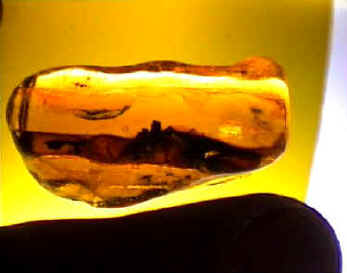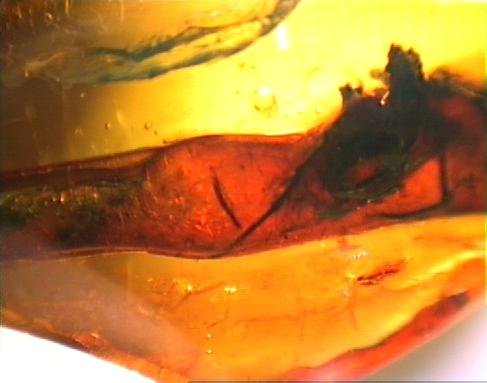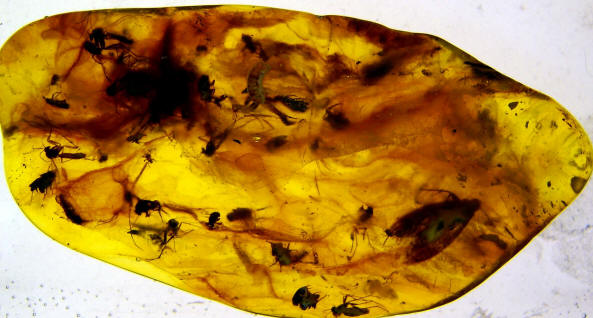|
| |
On
this page you may find some of the ambers of my collection that show
particularities worth consideration and discussion.
All pictures may be downloaded and
used freely.
Birth of a worm
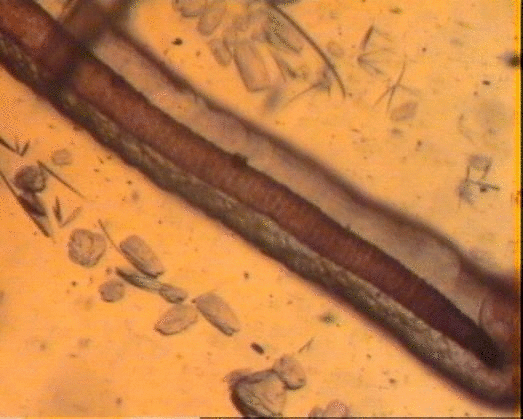 |
Part of my collection
consists in hundreds of pieces from amber necklaces.
Many of them are still to
be examined, all, however, contain some small insect or some other “strange”
object.
Recently I examined a piece of amber I believed to contain a fragment of
wood.
My curiosity increased
while I was polishing it and at last I was deeply moved.
It won’t happen often to see a small worm ( egg 0,5mm – worm 1,1mm )
hardly slipped out of his egg and imprisoned in a piece of amber.
|
Hereafter part of the interesting letter by Prof. Eugenio
Ragazzi:
“The evidence that the animal was able to
get in the still liquid mass, as you may see from the kind of cavity around the
body, gives further information on the process of fossilization of the amber.
Most probably the liquid contained in the egg allowed the worm to survive long
enough to be able to slip outside the egg. Maybe it hatched before time, trying
desperately to flee from hypoxia, as exchange of gasses
with the outside was no longer possible.”

Mating
midges - Rare.
| Spiders in
copula? ( 22 mm) - Amber 018 |
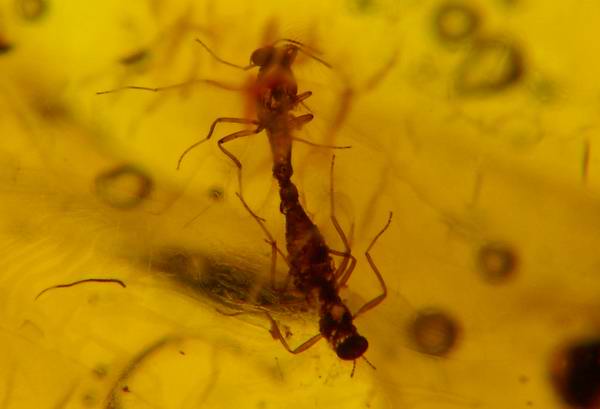 |
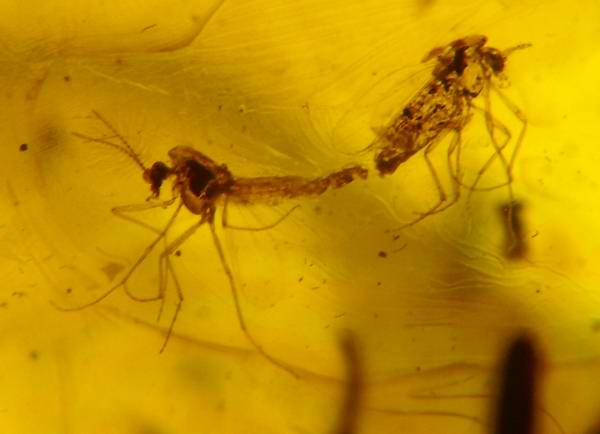 |
| Amber 0567
Diptera Nematocera: Chironomidae
|
Amber 0568
Diptera Nematocera: Cecidomyiidae 
|
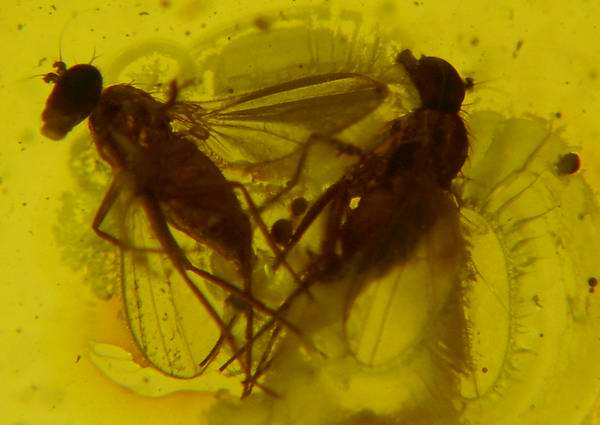 |
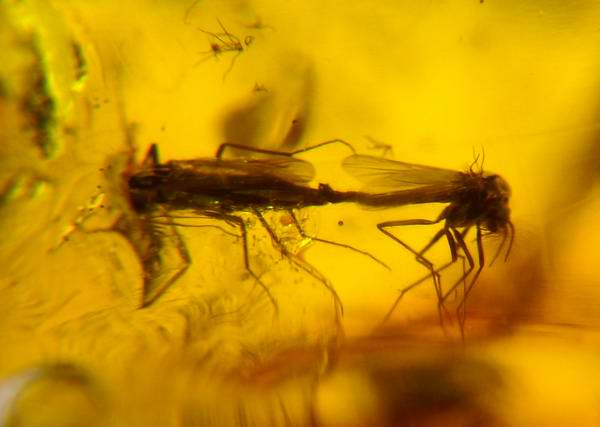 |
| Amber 0699
Diptera Brachycera: Dolichopodidae
|
Amber 0700
Diptera Nematocera: Chironomidae 
|
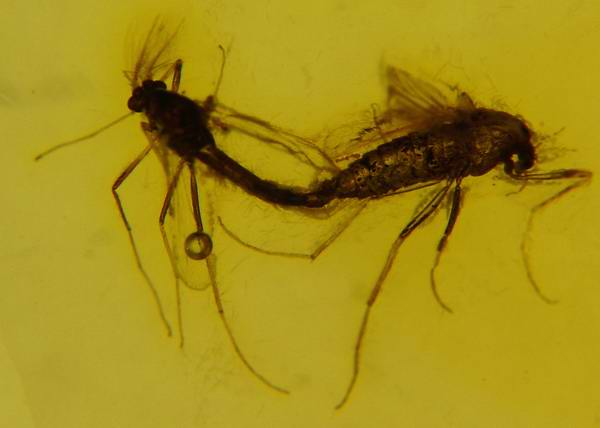 |
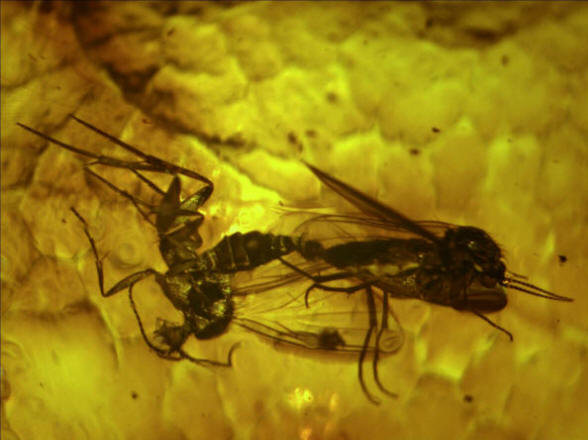 |
| Amber 0893
Diptera Nematocera: Chironomidae
|
Amber 0944
Diptera in copula  |
| The eggs are a quite rare
finding, a few times they scattered in the amber other times are near the female
which laid them. |
Amber 0130
-
Amber containing
several insects of various kinds and with two groups of eggs
 |
Amber 0130 - two separate groups of Diptera eggs
 |
Amber 0130 - eggs of unidentified
insects
 |
Amber 0315 - Arcaeognatha (?) with eggs
 |
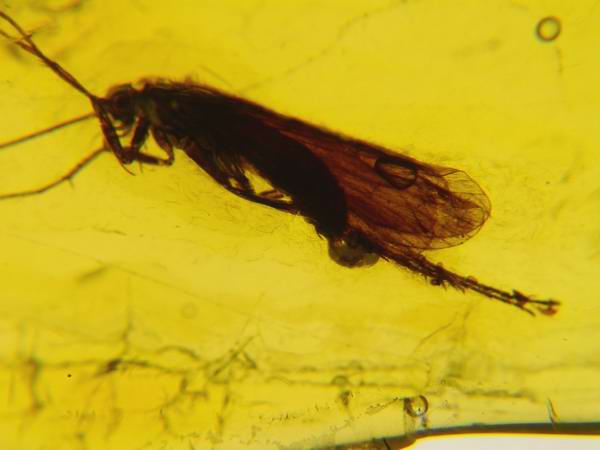 |
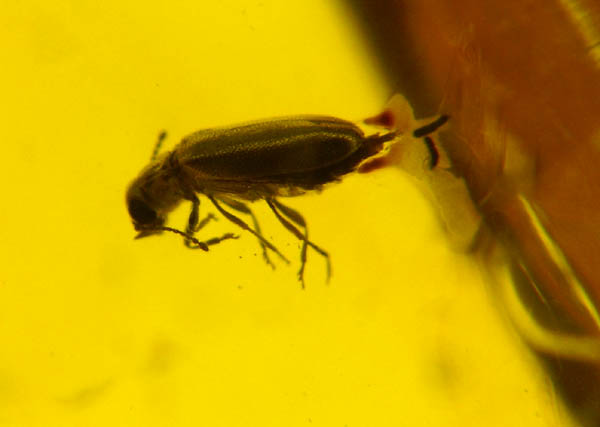 |
| Amber 902
Trichoptera with eggs. |
Amber 578
Coleoptera with
2 eggs.  |
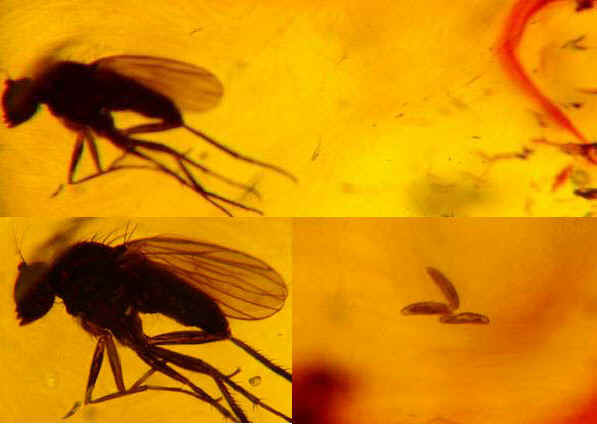 |
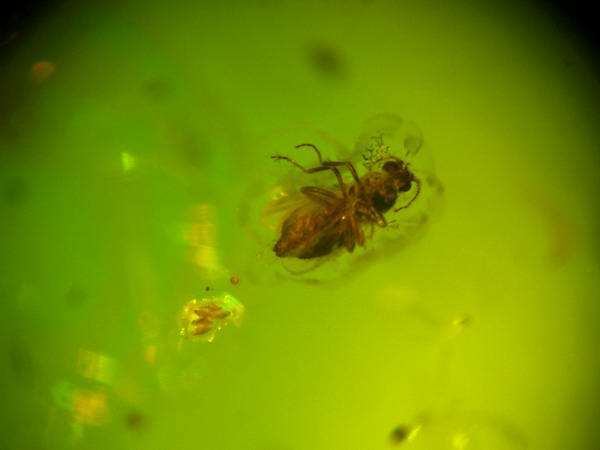 |
| Amber 0312
Diptera Brachycera with eggs
|
Amber 094
Nematocera:
Chironomidae with eggs 
|
|
A
parasite is an organism living at the expense of some other.
Presumably
the oldest parasites can be found in amber and are mainly mite
(arachnida: mite)
In baltic amber mite can be found frequently, however, seldom as
parasites. Probably you need a sharp eye and a very good microscope to detect
these.
My collection comprises various pieces containing mite, but I find it
difficult to take pictures. The tiny mites (0.2-1mm) are nearly always hidden by
the body of their host.
|
Amber 121
-
Hemiptera with mite
 |
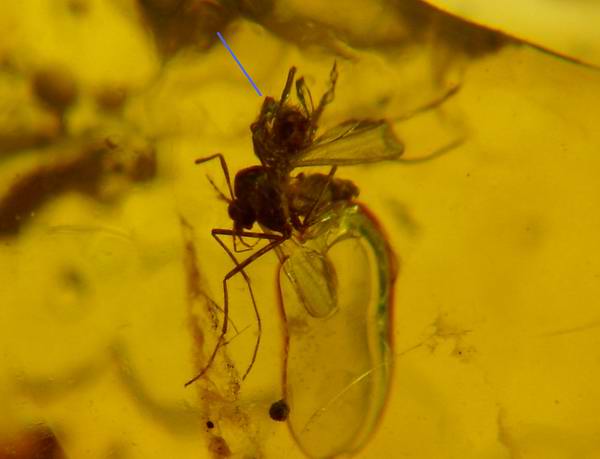 |
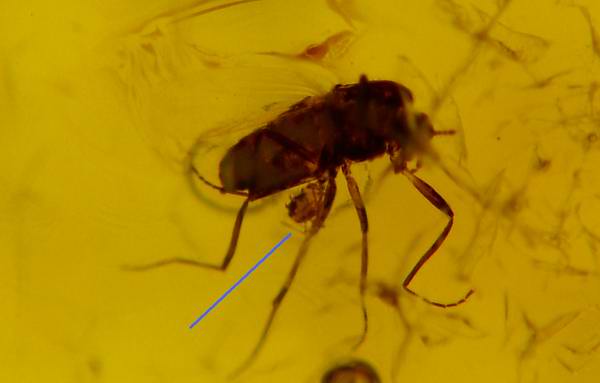 |
| Amber 0511
Diptera with mite
|
Amber 0059
Diptera with mite

|
|
Looking closely at these pictures you may wonder how these insects
managed to survive with a mite on their wing or their abdomen. Maybe they fell
into the resin for their very difficulty in piloting
You
will note that these parasite stayed firmly attached to their hosts and did not
abandon them to gain safety.
|
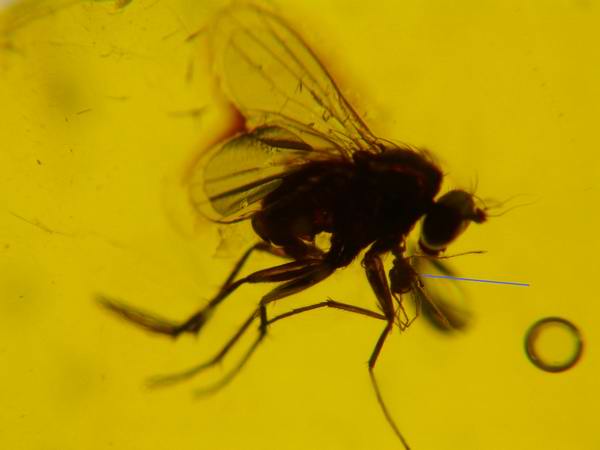 |
 |
| Amber 0583
Diptera with mite
|
Amber 0250
Diptera with mite on the back 
|
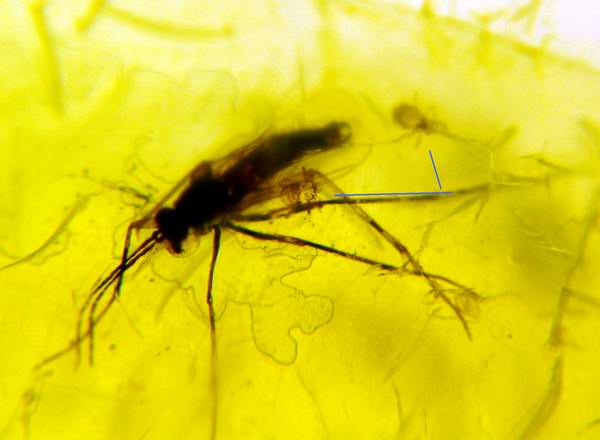 |
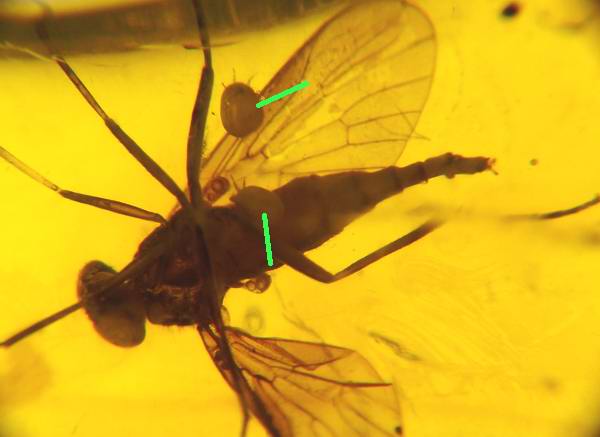 |
| Amber 0612
Diptera with mite on the leggs
|
Amber 0790
Diptera with 2 mites: wing and abdomen

|
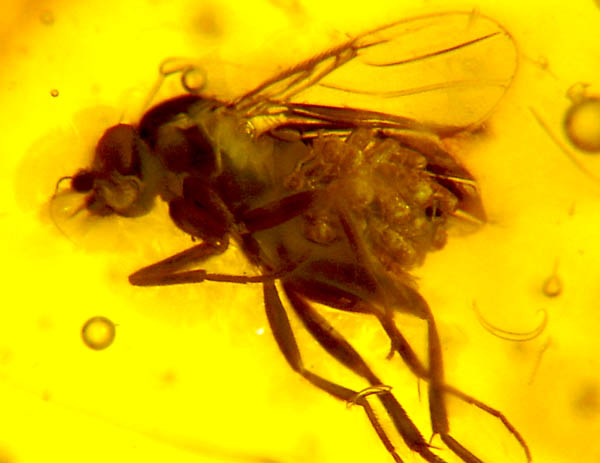 |
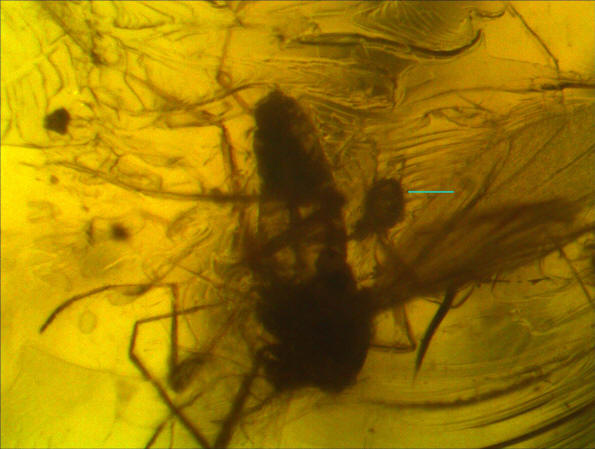 |
| Amber 0622
Diptera has been invaded by mites. |
Amber 0938
Diptera with mite  |
Amber 0131 - Frigane with a parasite
coupled to a limb
 |
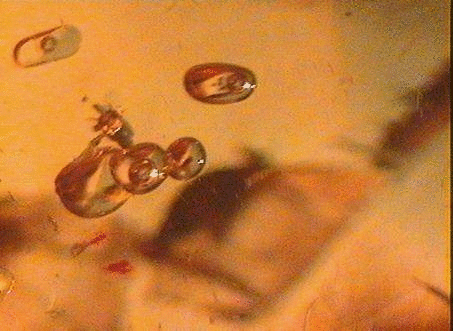 |
It
is quite easy to find empty bubbles in baltic amber, whereas they seldom
contain water with mobile bubbles of air.
The
picture shows an oblong formation, in three parts, containing a small bubble
that travels from one sector to the next according the inclination of
the amber.
This
allows for the following consideration:
-
the presence of water is due to damp surrounding (rain, dew).
-
the resin must have dropped down abundantly from the tree, running in parallel
to the main axis of the bubbles and
it must have been quite fluid in order to be able to include the water that
otherwise would have evaporated.
-
if you look at the photo the
direction of the flow must have been from left to right (really from top to
bottom) as in fact the bigger bubble seems “flattened” and shrinked due to
the adhesivenessof the resin on its way down.
 |
|
Recently
I bought two pieces of amber showing a
rather big cylindrical formation, red brown and opaque .
I was guaranteed that
they are twigs trapped in the resin. As they weren’t expensive I bought them,
though sceptical.
Apart
a larva and some stellate hairs in one and two dipteria in the other they
contain nothing interesting, and the surface of the twig shows nothing special.
So
one day I decided to treat the two pieces with distilled water,and slowly the
twigs became transparent and one the amber set free its hidden prisonner, the
hollow twig had trapped a rather big insect.
I
have not yet identified the insect that can be seen only in part, but I presume
that the leg belongs to a hemipteron.
Yet I am
not convinced that the cylinders are twigs. I think a more ancient resin
casting.
 |
|
You
may often find more than one insect in a piece of amber. Considering that most
pieces of amber are relatively
small you may conclude that 40.000.000 years ago there must have been an
enormous quantity of insects or that the resin attracted them strongly.
What
puzzles me is to find pieces of amber with dozens of insects of the same species
or also various species, so one might even think of collective suicide.
|
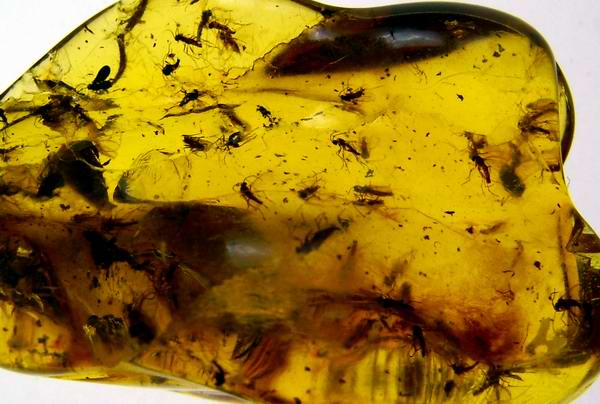 |
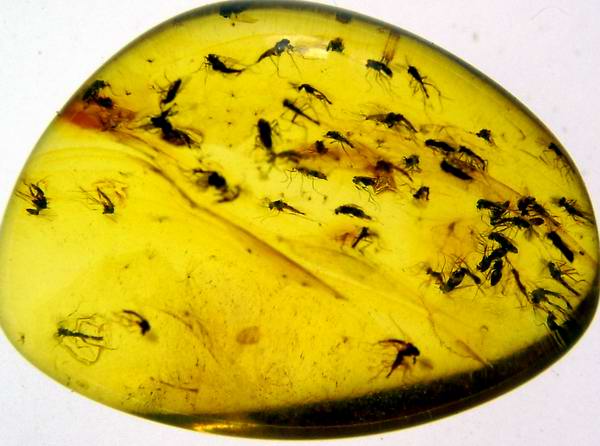 |
| Amber 0147 - 37x25mm
Diptera Nematocera: Sciaridae 52 ex.
|
Amber 0148 - 28x25 mm
Diptera Nematocera: Sciaridae 58 ex.
|
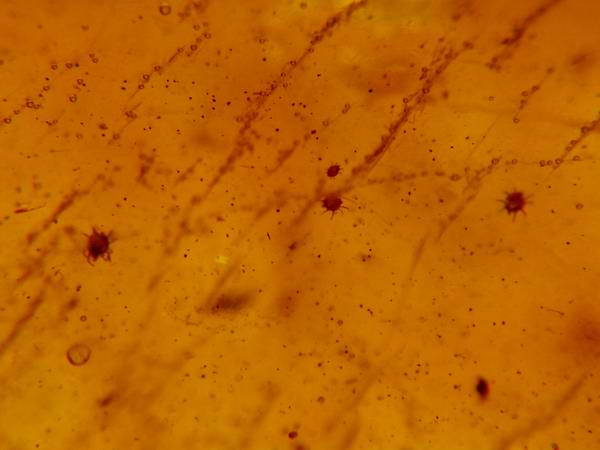 |
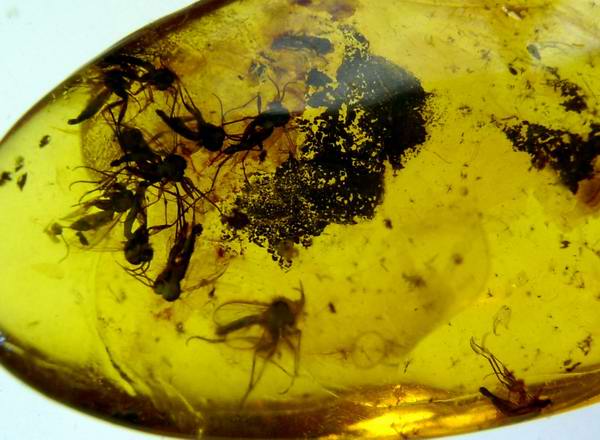 |
| Amber 0232
Many acari and pollens
|
Amber 0310
12 Diptera Nematocera 
|
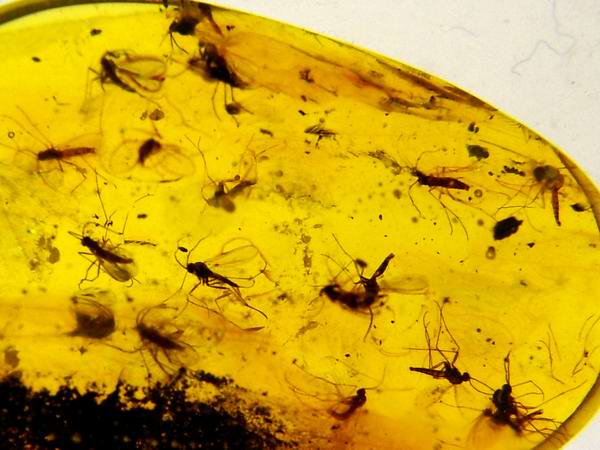 |
|
| Amber 0580
Many Diptera Nematocera: Sciaridae
|
Amber 0686
Many Diptera 35 ca.  |
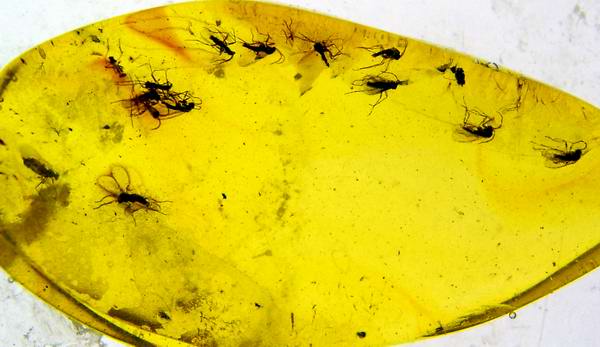 |
|
| Amber 0846
15 Diptera Sciaridae |
Amber 0130
Mass
of various insects  |
|
The
nematocera: sciaridae seem to be more often subject to “collective suicide”
; it seems also particularly strange that all insects (Diptera) are males.
|
Amber 0666 -
Much
pollen, stellate
hairs,
mites and springtails,
probably transported
by wind  |
Amber 0943 - Nodule of
raw amber with
marine concretions,
length 33 mm.
 |
|
The
Exuvia is
the exoskeleton abandoned by
an insect after molting - quite rare. |
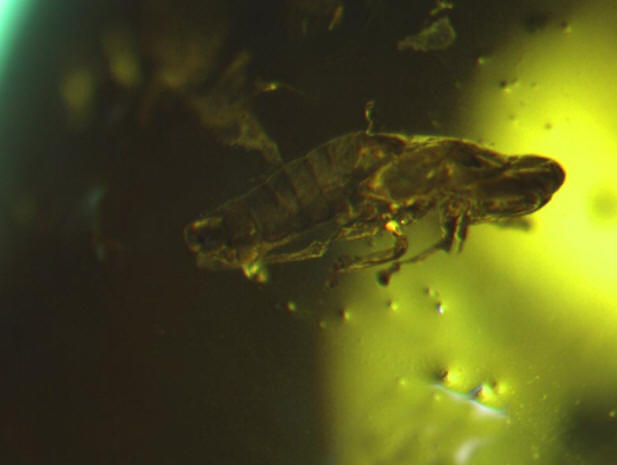 |
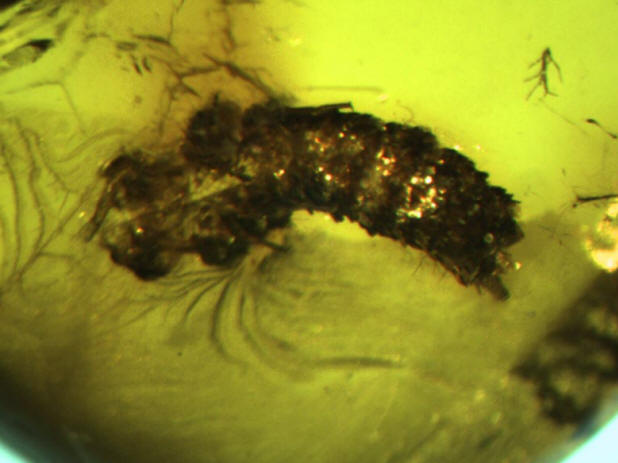 |
| Exuvia - amber 0355 |
Exuvia - amber 0162
 |
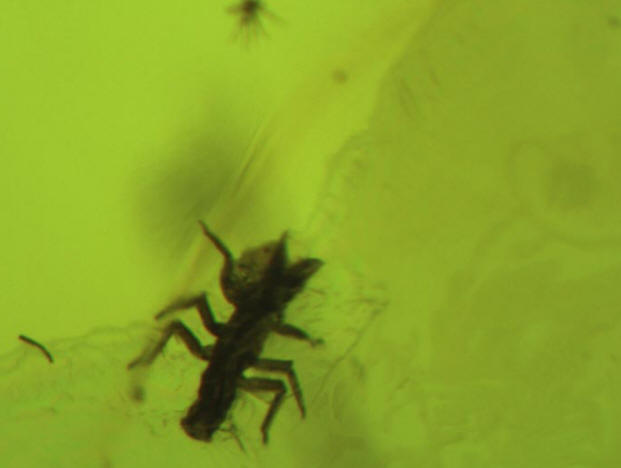 |
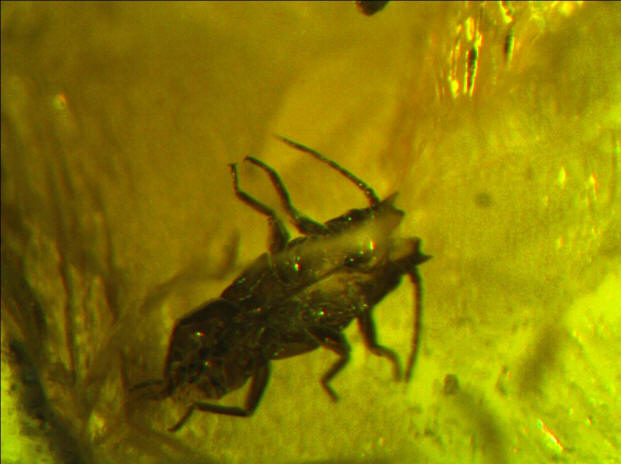 |
| Little exuvia - amber 0365
|
Exuvia - amber 0364
 |
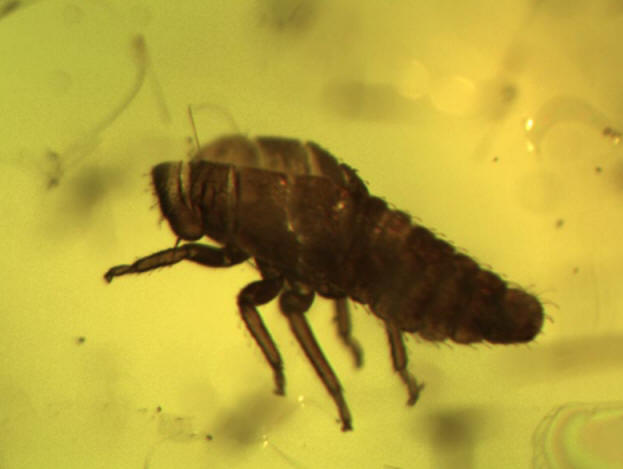 |
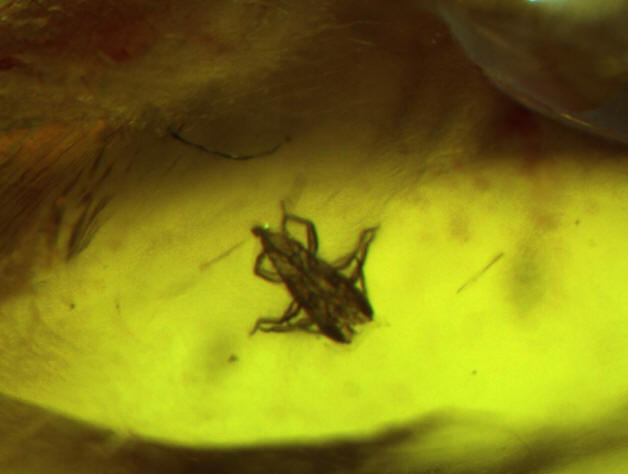 |
| Exuvia - amber 0362
|
Little exuvia - amber 0356
 |
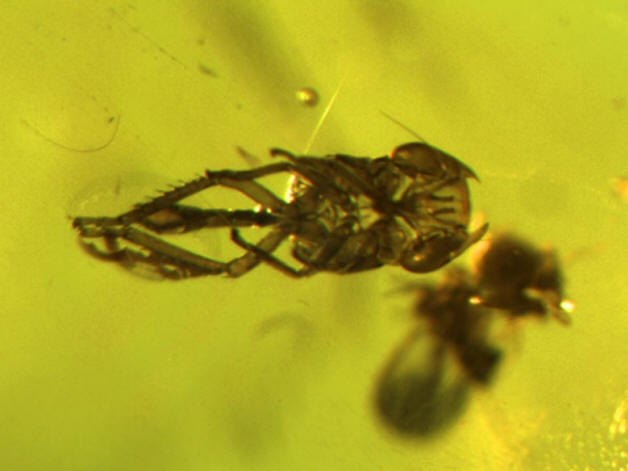 |
|
Exuvia - amber 0888
 |
|
|
| The excreta of insects that lived in
the trees could fall on resin The observation of these excreta is
fairly common in Baltic amber; an entomologist, analyzing their
structure, might perhaps go back to the insect which issued. |
 |
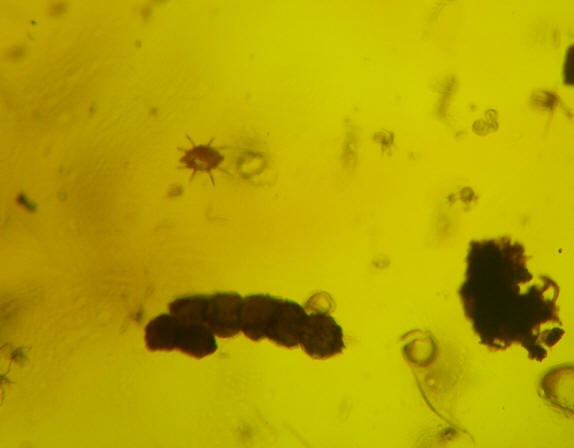 |
| Excreta
6 mm - amber
0645 |
Excreta chain 5mm - amber 0092  |
 |
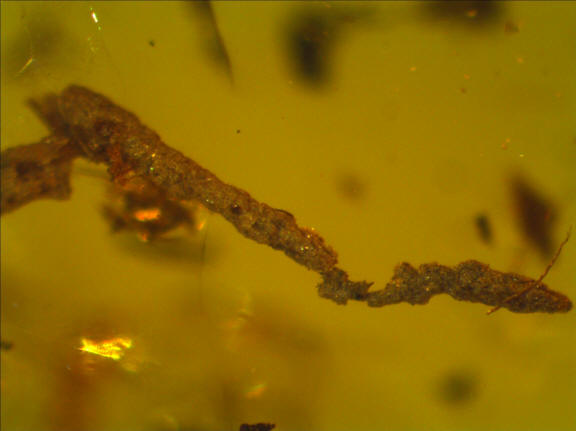 |
| Excreta scattered - amber 0870
|
Long excreta - amber 0584  |
|




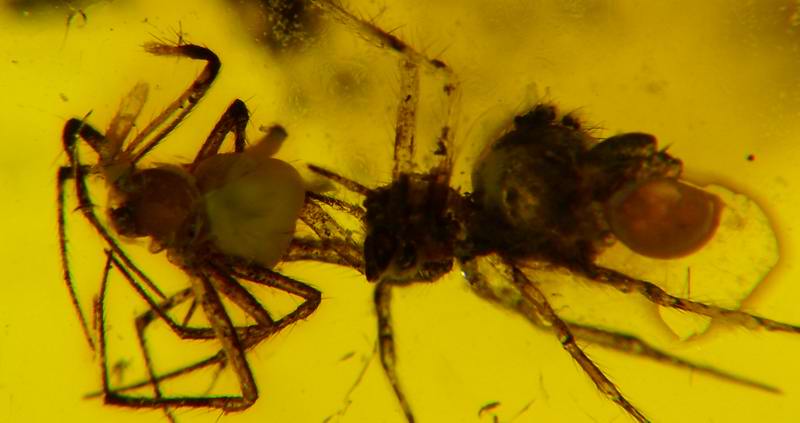







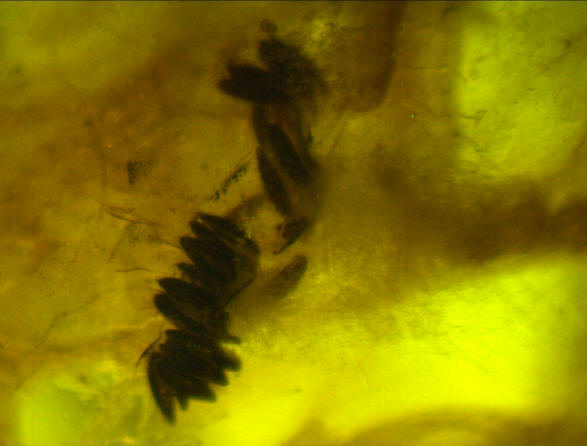
.jpg)
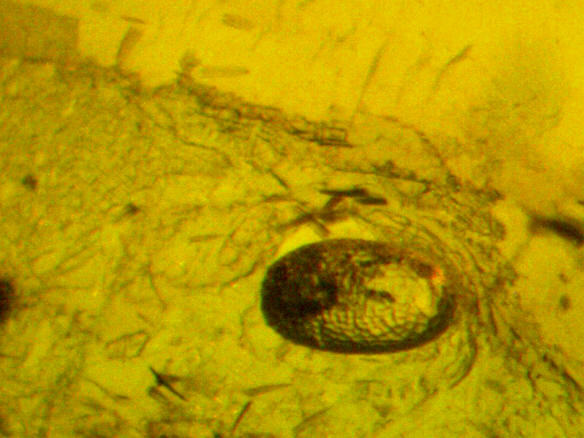
.jpg)
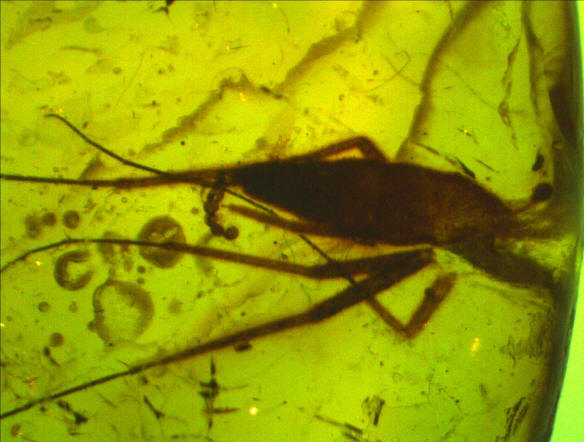
.jpg)
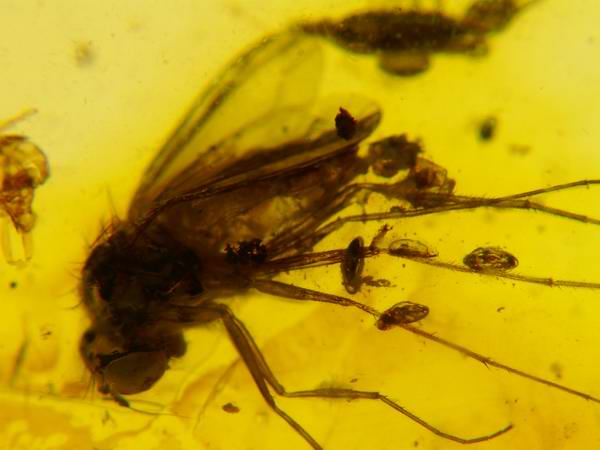
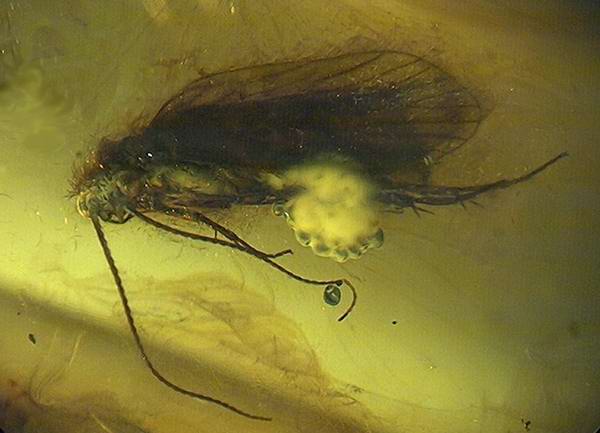




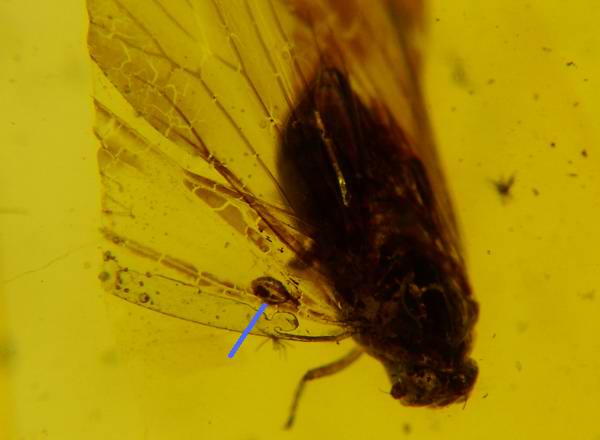
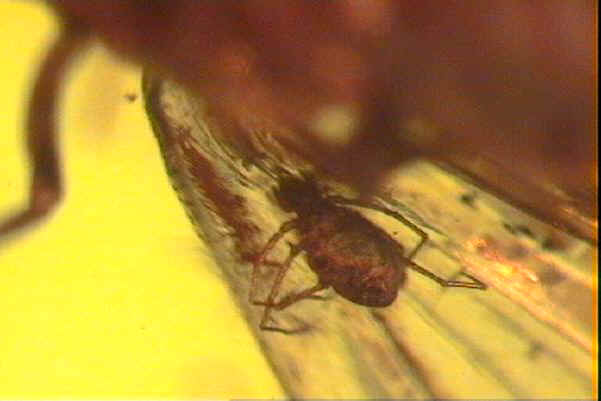







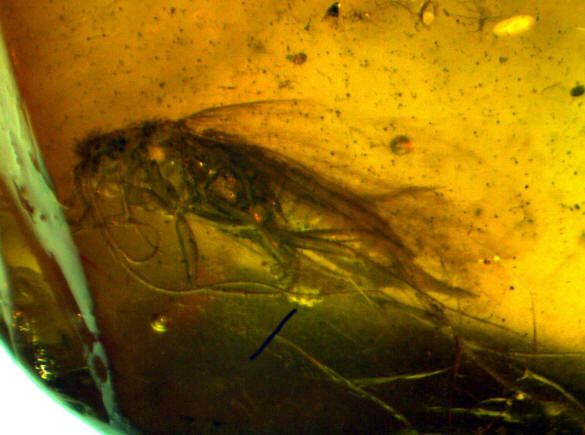
.jpg)

